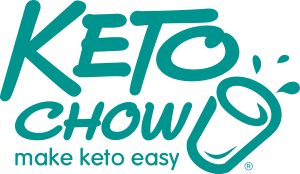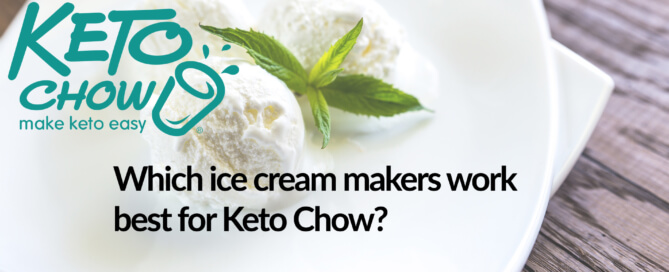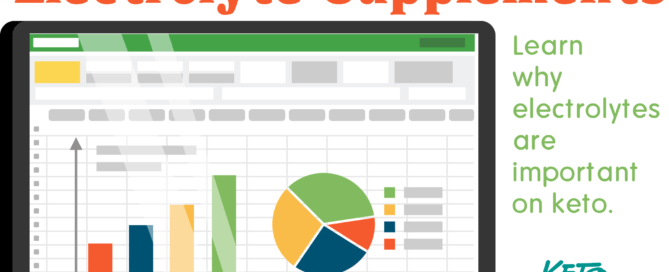Which ice cream makers work best for Keto Chow? Review Round-up!
One thing we love to do with Keto Chow is making ice cream, it’s extremely satisfying to make an entire meal into a delightful frozen, soft-serve treat. There are a LOT of different ice cream makers on the market, which makes picking one a bit difficult and so we frequently get asked “what ice cream makers should I buy?” After getting that same question 3 times in one day a few weeks ago, we decided to try out several Ice Cream makers and see how well they work to make Keto Chow ice cream.
One of the unique challenges with Keto Chow is that compared to traditional ice cream, there is a LOT of water in it and that water tends to form rather large ice crystals. Quality ice cream is marked by small, even ice crystals. Keto Chow also makes a great soft-serve style ice cream but turns into a solid block if you try to put it into the freezer to harden as you would a typical ice cream mix.
There are three main styles of ice cream maker:
- “Old-time” that you need ice and rock salt
- “Freezer bowl” that you put a bowl in the freezer, no ice or salt needed. Under NO circumstances do you EVER wash these in a dishwasher or use hot water to clean.
- “Compressor” where the unit is larger, more expensive, and does the actual freezing using what amounts to a built-in ice maker.
We didn’t test out any of the “old-time” units, those are better for large batches and really don’t work well for Keto Chow. We tested 5 “freezer bowl,” and 2 “compressor” style units. So let’s meet our contenders!
Starting with the smallest, and least expensive, we have the DASH “My Pint” 0.4 quart. This thing is extremely tiny and only holds ⅓ of a serving of Keto Chow. It is cheap at $20 on Amazon and relatively easy to find at stores like Target
Next, we have the Americana Maxi-Matic EIM-520 1 quart. It’s still quite small but was able to hold an entire serving of Keto Chow with no overflow. I bought this one for $33 on Amazon The red one is 1.5 quarts and likely is the same as the next ice cream maker, or at least exceptionally similar.
The next ice cream maker is also by DASH, the DIC001AQ 1 quart. Easily holds a full serving of Keto Chow with ample expansion room. This one’s a bit tricky to find though. I got it on Amazon for $67 but it’s currently only available from 3rd party sellers for $171! Interestingly, the exact same lid and mixer design are also available from VPCOK for $56 leading me to think that it’s the same product with different branding – the VPOCK claims to be 1.5 quarts which actually sounds more accurate than the 1-quart figure.
Next, we have the Cuisinart 1.5 Quart Frozen Yogurt ICE-21P1 which comes in a stink-load of different colors for $70. This is one of the preferred ice cream makers by Carrie Brown, Keto Ice Cream guru extraordinaire and proved to be one of our favorites, as you’ll soon see.
The final “freezer bowl” maker is the Cuisinart ICE-30BC 2-Quart – this one is supposed to be $120 but for whatever reason is the same $70 as the previous Cuisinart despite having a larger capacity and being much cooler looking.
Now we have the first Compressor style, the Whynter ICM-15LS 1.6 quart is far more expensive than the previous models at $220 but the bowl does not need to be pre-frozen for 12-24 hours. You can actually make multiple batches, one right after the other. Strangely, extra bowls are still quite pricey at $30. The 1.6 quart bowl is just the right size for a full serving of Keto Chow.
For a baseline comparison, we also ran a batch in the Cuisinart Cuisinart ICE-100 1.5 quart that Miriam bought for Father’s Day several years ago. At $300, it’s REALLY expensive compared to many of the freezer bowl makers, but it makes REALLY good ice cream.
We could have also tested the Whynter ICM-200LS 2 Quart that we have at the Keto Chow office, but it makes essentially the exact same results as the Cuisinart one. This model is currently $290 but we got it on a prime-day special in 2019 for $260. This ice cream maker gets a lot of use and we have 3 bowls and 2 paddles.










